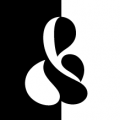History of ball terminals in serif typefaces

Adam Ladd
Posts: 285
I'm just curious if there's some background to why ball terminals are used for some characters (e.g. a, c) in some serif typefaces (even blockier slab serifs), instead of serifs for all characters.
I feel I've seen both (all serifs in a typeface and the mix of serif and ball terminal), and I figure that perhaps the use of ball terminals has something to do with space/density in a character or aesthetic reasons. But wondering if there's more to it that would guide as to when it might be the best decision to use versus not.
I feel I've seen both (all serifs in a typeface and the mix of serif and ball terminal), and I figure that perhaps the use of ball terminals has something to do with space/density in a character or aesthetic reasons. But wondering if there's more to it that would guide as to when it might be the best decision to use versus not.
0
Comments
-
I think the use of (some, reasonable) ball terminals in a serif (especially slab serif) typeface can make it feel less sharp, less harsh. It gives the typeface a warmer tone.
I can imagine having a design axis that increases the number of ball terminals as you slide along. Or one or more stylistic sets to turn them on.2 -
This observation isn't particular to ball terminals per se: whether using a broad tip tool or an expansive tool, when writing Latin letters one can more easily produce a greater variety of pleasing forms and weights in a vertical/hanging terminal than in a horizontal terminal. Hence horizontal serifs tend towards flat, while vertical terminals can take a variety of shapes from translation, rotation, expansion, or some mix. This in turn has influenced typeface design by suggesting more shapes in hanging terminals that give particular flavour, distinctive of individual styles.6
-
Thank you for expanding on this with your knowledge, Thomas and John. Great insights/points.0
-
In type, the more one can think free of black-painting tools, the greater the potential for both pleasure and productivity. It's just mentally more challenging.
When making the Armenian component of Ernestine, I was in a position to decide where to put balls; harmonizing with the "mood" of the Latin being the goal, attempting to rationalize where a [right] hand holding a particular obsolete tool would put a ball would have been an arbitrary constraint, reducing the quality of the product.0 -
I don't think it's a matter of 'attempting to rationalize where a [right] hand holding a particular obsolete tool would put a ball': any rationalisation has already taken place, centuries ago, in the evolution of the typical forms of letters. You say you were in a position to decide where to put ball terminals in Ernestine Armenian, but you didn't put them in the place of horizontal entry and exit strokes/serifs, you used them for hanging terminals.1
-
Conceptually, contrast the uniformity of serifed type detail that exists in the oldstyle—informed by the principle of constraint exercised by a broad nib pen held at a consistent angle; with the variety of detail that exists in the didone—informed by the flexibility of a pointed nib capable of producing a variety of shapes: balls, hooks, triangles and hairlines.
As well as the ball terminals on /a, /c, /f, /g, /r and /y that one finds in the Clarendon, note also the skinny hook terminals of its /R and /a—all vestiges of the didone which may be considered “transitional”, artefacts of the emergent principle of related boldness (see image below) that occurred in the mid 19th century. By the early twentieth century, fully modernist slab serif designs such as Beton (the slab Futura), Rockwell and City eschewed such devices.
Image by James Mosley from Typophile.1 -
In calligraphic terms ball terminals just happen when the stroke changes direction. They're not present in all scripts. Even most humanist writing lacks them. Adding a bit of extra weight at the end of a thin stroke somewhat helps its visibility.

5 -
But Wes, balls are supposedly round, not teardrop or oval shaped (other than rugby and American football…) It’s rather difficult to write a round shape with anything other than a pointed nib pen. (Or a speedball round nib!)2
-
@Nick Shinn, are you trying to say that ball terminals are different somehow because they're morphologically pointed nib?0
-
It’s rather difficult to write a round shape with anything other than a pointed nib pen.


I took Wes' point to be that a ball terminal is simply a particular proportion of loop or knot finial.
0 -
Nice demo here by Seb Lester on making various shapes, including ball terminals, using a pointed nib. (Possibly NSFW.) (From on Seb's Tumblr site, on which he also posts lots of examples using different writing tools.)0
-
Actually for ball terminals, teardrops and the like a stub nib would be more fitting even for Wes' example and slightly more calligraphic without the need to fill in/draw. @Mark Simonson, he might be using a pointed pen but he's actually 'filling' in the terminals, it becomes more obvious if the size of the nib increased or the xheight, at the size he's writing not so much where he could just dot it and it would suffice for a ball terminal. Filling it in is okay but it's slightly bordering on lettering/drawing really. If you look at old chancery cursive they have a lot of teardrops in them for ascenders, those were usually done with a stub as far as I can tell but the nib dictated it so you didn't have to fill in or anything. For those that used a broadedge, they'd sort of tilt the nib upright to get it to a point but eventually they filled it in too.0
-
The ball terminal is associated with the pointed nib because that tool is adept at making any shape, by “filling in”, and also by putting a height of ink—a blob, even—on the page when pressed down firmly and its two points separated.
The pointed nib was, for the type designer, a conceptual artifice—the ability to write one’s designs accurately with a pen and ink was irrelevant.
The very idea of stroke contrast that was expressed in the didones originated in the manner in which one nib could produce extremes of thickness according to how firmly it was depressed—this was quite alien to punch cutting, and a challenge.
Because the pointed nib could easily fill in any outline, be it the triangular serifs of /S or the round terminals of /a etc., type designers were prompted to incorporate a variety of terminal shapes into their design.
Always, there was a creative tension between calligraphers, engravers and type founders, to see who could produce letter forms that took another skill’s best efforts, as inspiration, and topped them.5
Categories
- All Categories
- 46 Introductions
- 3.9K Typeface Design
- 487 Type Design Critiques
- 564 Type Design Software
- 1.1K Type Design Technique & Theory
- 656 Type Business
- 861 Font Technology
- 29 Punchcutting
- 520 Typography
- 119 Type Education
- 324 Type History
- 77 Type Resources
- 112 Lettering and Calligraphy
- 33 Lettering Critiques
- 79 Lettering Technique & Theory
- 558 Announcements
- 94 Events
- 114 Job Postings
- 170 Type Releases
- 179 Miscellaneous News
- 276 About TypeDrawers
- 54 TypeDrawers Announcements
- 120 Suggestions and Bug Reports






